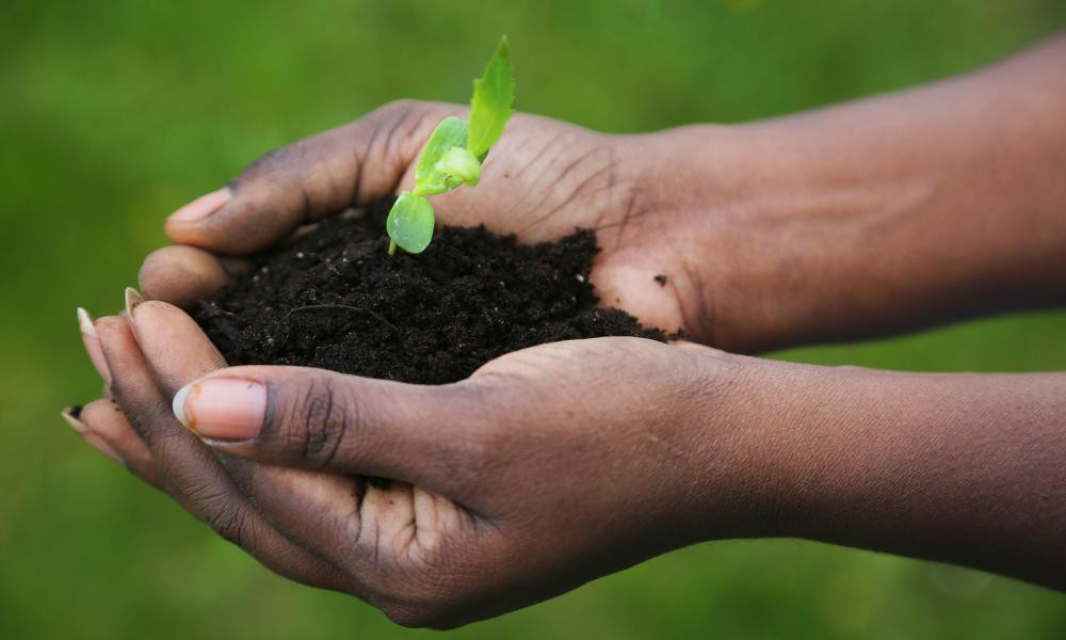Alarming toxic PFAS levels revealed in new report raise concerns that the chemicals are contaminating vegetables
Sewage sludge that wastewater treatment districts across America package and sell as home fertilizer contain alarming levels of toxic PFAS, also known as “forever chemicals”, a new report has revealed.
Sludge, which is lightly treated and marketed as “biosolids”, is used by consumers to fertilize home gardens, and the PFAS levels raise concerns that the chemicals are contaminating vegetables and harming those who eat them.
“Spreading biosolids or sewage sludge where we grow food means some PFAS will get in the soil, some will be taken up by plants, and if the plants are eaten, then that’s a direct route into the body,” said Gillian Miller, a co-author and senior scientist with the Michigan-based Ecology Center.
The testing, conducted with Sierra Club, found the chemicals in each of nine brands of biosolids it checked, and at levels that exceed standards set for two common types of PFAS. The biosolid brands are sold at stores like Home Depot, Lowes, Menards and Ace Hardware.
PFAS, or per- and polyfluoroalkyl substances, are a class of about 9,000 compounds that are used across dozens of industries to make products water, stain and grease resistant. They’re also linked to a range of serious health problems like cancer, birth defects, endocrine disruption, and liver disease. They are known as forever chemicals due to their longevity in the environment once introduced.
Industries that use or produce PFAS often discharge the chemicals into public sewer systems where they travel to wastewater treatment plants, along with other industrial and human waste. Water is extracted from the waste, treated and released back into waterways. What remains in the treatment plants is a semi-solid mass of sludge that’s expensive for water treatment facilities to dispose of in landfills.
Sludge holds nitrogen, phosphorus and other nutrients that help crops grow, so with increasing frequency in recent years it’s treated and sold as home fertilizer, or given away to farmers. In 2019, about 60% of sewage sludge produced by treatment facilities was spread on farmland and gardens, as well as schoolyards and lawns.
“It’s not widely known that sewage sludge is spread [on gardens and agricultural land] as fertilizer, but that’s where a lot of our waste from water treatment plants ends up,” Miller said. “There are lots of nutrients in it, but, unfortunately, it also recycles our industrial and synthetic waste.”
Human excrement from which sludge derives has mixed with any number of 80,000 manmade chemicals that are discharged from industry’s pipes or otherwise pumped into the sewer system. Though the treatment process kills most living organisms in biosolids, and treatment plants screen sludge for heavy metals, it can still teem with pharmaceuticals, PCBs, PFAS and other toxic chemicals that aren’t removed.
The EPA Office of Inspector General in 2018 identified more than 350 pollutants in a sludge sample, including 61 that it classifies “as acutely hazardous, hazardous or priority pollutants”. That’s prompted calls for a ban or much stricter regulation of sludge, and public health advocates say recent testing is further evidence that biosolids are unsafe.
The new study is not peer reviewed, but independent researchers who checked it for The Guardian said its methodology is sound. The study’s authors checked for 33 individual PFAS compounds and found each biosolid product contained between 14 and 20.
Among the few standards for PFAS in sludge are in Maine, where the state government set screening levels for PFOA and PFOS, two common types of PFAS. It developed the standards after milk from cows on a dairy farm that spread sludge were found to be contaminated with high levels of PFAS. The cows had to be killed, and the farmers found extremely high PFAS levels in their blood.
Of the nine biosolid brands that the report’s authors studied, eight exceeded Maine’s standards. Though PFAS tests used by regulators check for up to 33 individual compounds, thousands exist. The authors also used a different test method to check for the total level of organic fluorine, which is an indicator of PFAS, and will provide a more accurate reading of levels. Those results found up to 233 parts per billion of fluorine, which the authors wrote is “similar to concentrations found in fish collected in highly polluted areas and thousands of times higher than the amounts that are regulated in drinking water”.
Though multiple studies have found that plants and vegetables uptake PFAS, there are no standards for PFAS in food. Still, the chemicals can be harmful at low levels, and public health advocates recommend limiting exposure. Humans are also regularly exposed to PFAS in food packaging, water and home products.
Many of the biosolid brands market the products as “eco”, “natural”, “reclaimed” or “organic”, which Miller characterized as “comforting” but misleading.
“These are words that can have some truth but there’s no legal definition for them,” she added. While some brands state that the product is made with biosolids, packaging doesn’t explicitly say that it’s a combination of human and industrial sewage waste.
The study’s authors call for stricter regulation of sludge, industry to address its PFAS waste, and for regulators to impose limits for the entire class of PFAS compounds instead of just a few. Though Michigan and Maine have taken some steps to regulate PFAS in sludge, they only screen for two out of thousands of compounds.
A spokesman from the Water Environment Federation, a trade group that represents wastewater districts, called for stricter regulation of PFAS, increased funding for plants to remove the chemicals, and for industry to address its PFAS waste.
“Water facilities are receivers of PFAS,” he said. “The best way to reduce PFAS is to stop the pollution at the source by prohibiting use in commerce, stopping industrial discharges and cleaning up contaminated sites.”




